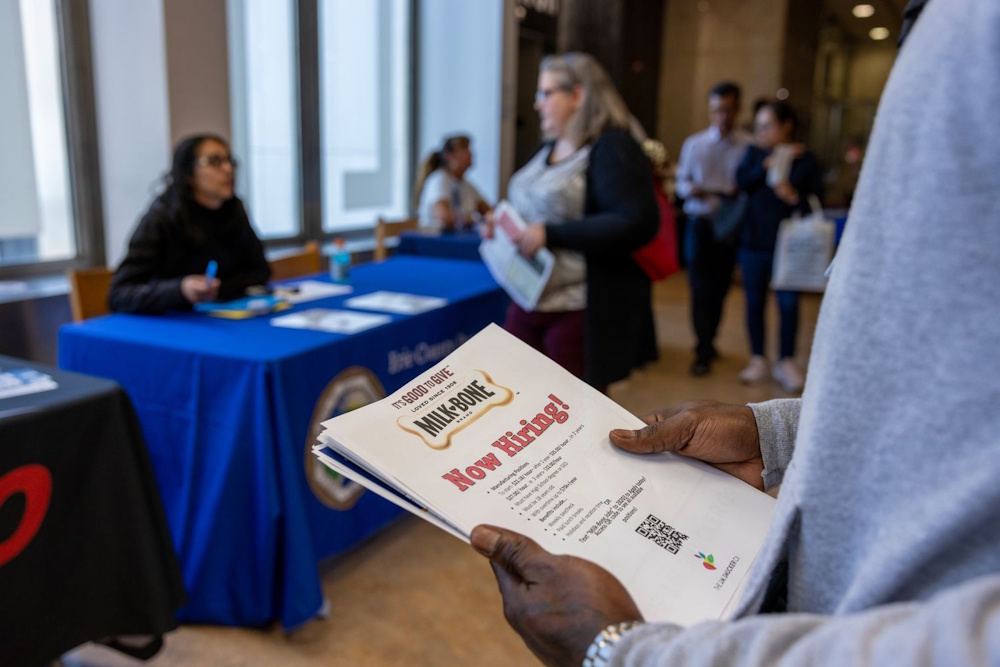
In September, the labor market experienced an unexpected rebound with the addition of 119,000 jobs. However, this development occurs amidst indications of a decelerating overall economy. Expectations among economists were for an addition of 50,000 jobs, with the unemployment rate anticipated to hold steady at 4.3%, as per reports. Postponed for seven weeks as a result of the government shutdown, the most recent assessment of the U.S. labor market indicated that unemployment increased in September, reaching its highest point in almost four years. Furthermore, the modest job gains for August, initially reported at 22,000, were adjusted to reflect a loss of 4,000 jobs, while July’s figures were also revised downward by 7,000 jobs, as per the data. The health care and social assistance sector persisted in propelling overall employment growth. In September, those sectors contributed an estimated 57,100 jobs, representing nearly half of the total employment gains. During a month characterized by unseasonably warm weather, the leisure and hospitality sector added 47,000 jobs. Employment declined in sectors including transportation and warehousing, which saw a reduction of 25,300 positions, temporary help services with a decrease of 15,900 jobs, and manufacturing, which lost 6,000 jobs.
Despite the September employment data being available since early October, it offers an essential overview of the labor market amid ongoing tariffs, persistent inflation, and high interest rates that are collectively dampening the US economy. Furthermore, Thursday’s report could potentially represent the final unblemished jobs report for several months, as the shutdown disrupted the meticulously calibrated procedures of data collection and analysis throughout October and into part of November. The BLS announced on Wednesday that a distinct October jobs report will not be released; rather, portions of that data will be incorporated into the November report, which is set for publication on December 16. Despite the stronger-than-expected gains in September, this year remains on track to record the weakest employment growth since the pandemic and, prior to that, the Great Financial Crisis. “The job market exhibited considerable weakness during the summer months, with only marginal improvement observed in September,” stated Heather Long. “What we learned today is that both June and August experienced negative job growth, indicating job losses; 119,000 is a solid figure for September, but when we take a broader view, the average monthly job gain over the past four months stands in the low 40,000s.” “It appears to be quite feeble,” she added.
In September, unemployment, a key indicator of recessionary trends, increased, reaching its highest level since October 2021. Nonetheless, the rise in the unemployment rate can be attributed to an expansion in the labor force, predominantly reflecting a greater number of individuals seeking employment rather than a significant surge in layoffs, as indicated by data. The employment increases continue to be significantly concentrated. In September, the health care and social assistance sector, along with leisure and hospitality, represented a substantial 87% of the total job growth. However, in a labor market characterized by a prolonged period of minimal hiring and firing, there exist limited prospects for individuals in search of employment. According to the latest data, individuals are averaging six months in their job search efforts. The most recent data on unemployment claims reinforces that trend: On Thursday, a report from the Labor Department indicated that approximately 1.974 million individuals submitted continuing claims for unemployment insurance for the week ending November 8, reaching a new four-year peak. Initial claims, regarded as the most reliable indicator of layoff activity, decreased to 220,000 last week, staying significantly below the more alarming thresholds of 300,000 to 400,000. “If I had to characterize it, it still resembles a situation of ‘no-hire, no-fire,’” Long stated. “I do express concern, considering the increasing number of industries initiating layoffs, that this is beginning to resemble a ‘no-hire, start-to-fire’ scenario.”
Despite the mixed bag of data, the September report “could throw cold water” on the Federal Reserve cutting interest rates further when it meets in December, Kathy Bostjancic noted on Thursday. “The notable increase in employment, rising by 119,000 in September after a downward revision to a negative 4,000 in August, alleviates fears regarding a significant downturn in the labor market and diminishes the immediate need for another rate cut,” she wrote. Nonetheless, due to the unprecedented government shutdown, the September jobs report will serve as the most recent official monthly employment assessment available when the Federal Reserve deliberates its next interest rate decision on December 10. The release of the partial data for October and the complete data for November is scheduled for the following week.

